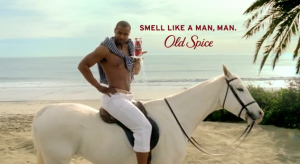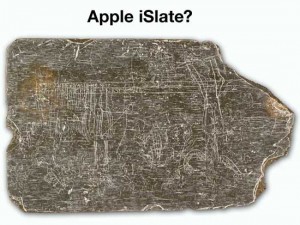Having read through numerous marketing blogs to find something that truly caught my attention, I stumbled upon Paul Cubbon’s Blog. The variety of his posts offer different perspectives relating to marketing; however the post that caught my eye was one about a Sesame Street commercial.
Although the Sesame Street persona may initially evoke an era that has long died out, the video proves that Sesame Street is still culturally aware and on top of current trends.
Cubbon’s post, “Sesame Street meets Old Spice”, examines Sesame Street’s ability to reproduce a parody of the popular Old Spice commercials.

As Cubbon notes in his blog, Sesame did the video “just right”, avoiding any innuendos that are too sexual or too adult. Sesame Street and Old Spice have both successfully expanded to an audience beyond their target market. The Old Spice commercials have attracted more than just their male-dominated target market by creating humorous commercials that people want to watch repeatedly.
Additionally, as Cubbon explains, Sesame Street has entertained their Preschooler market with Grover and tapped into the adult mind by parodying the ever-popular Old Spice commercial.
These ideas relate to similar concepts discussed in class pertaining to target markets and audiences. As we have examined, the “Baby Carrot” campaign had multiple types of packaging which was geared towards a variety of markets.
Ultimately, Cubbon’s discussion on the Sesame Street viral video proves that the ability to differentiate your marketing to attract different groups is an important factor in contemporary marketing.


 When people talk about their “carbon footstep” or their “tread on Earth” I never really knew what to think, because I had no idea how much effect I had on the environment. Something I have learned is that I can make a difference!
When people talk about their “carbon footstep” or their “tread on Earth” I never really knew what to think, because I had no idea how much effect I had on the environment. Something I have learned is that I can make a difference!  It isn’t a secret that rewards systems can be dysfunctional. Whether they are related to the global economic slump, such as the major bonuses given out in the states, or they are long term concepts outlined in
It isn’t a secret that rewards systems can be dysfunctional. Whether they are related to the global economic slump, such as the major bonuses given out in the states, or they are long term concepts outlined in  Many people are aware of the increasing awareness surrounding sustainability. Everywhere you look, there are “Be Green” posters, recycling bins, or hybrid cars. Although many people are working towards more environmentally friendly lifestyles, some companies are only doing so in order to appease their customers.
Many people are aware of the increasing awareness surrounding sustainability. Everywhere you look, there are “Be Green” posters, recycling bins, or hybrid cars. Although many people are working towards more environmentally friendly lifestyles, some companies are only doing so in order to appease their customers. Organizational culture is a concept that affects all business environments, whether employees recognize it or not. As a topic that has been covered in class, organization culture is something that has sparked my interest.
Organizational culture is a concept that affects all business environments, whether employees recognize it or not. As a topic that has been covered in class, organization culture is something that has sparked my interest. The yoga driven company known as Lululemon has faced anything but economic slumps in the past year. The business currently announced fourth quarter earnings significantly above normal. The only thing this company struggles with is keeping up with demand.
The yoga driven company known as Lululemon has faced anything but economic slumps in the past year. The business currently announced fourth quarter earnings significantly above normal. The only thing this company struggles with is keeping up with demand.  According to the Wall Street Journal, Sony plans to release a 3D television by the end of 2010. We all know the cult following 3D technology has acquired within the movie theatre industry, but what makes Sony believe they can successfully market a 3D television?
According to the Wall Street Journal, Sony plans to release a 3D television by the end of 2010. We all know the cult following 3D technology has acquired within the movie theatre industry, but what makes Sony believe they can successfully market a 3D television? In light of our new approach to finance, my eyes caught an article in the New York Times in regards to the European debt crisis. Within the European Union, twelve countries use the Euro currency, including Greece. Unfortunately, Greece is faced with debt that it cannot pay off; causing many to believe this could have adverse effects on global markets. Currently, these debt issues aren’t a liability to North America, but if they aren’t handled, they could be.
In light of our new approach to finance, my eyes caught an article in the New York Times in regards to the European debt crisis. Within the European Union, twelve countries use the Euro currency, including Greece. Unfortunately, Greece is faced with debt that it cannot pay off; causing many to believe this could have adverse effects on global markets. Currently, these debt issues aren’t a liability to North America, but if they aren’t handled, they could be. Many people are aware of the emergence of Apple’s newest and most sought-after product, the iPad. But what makes this product so great? Is it the name? Probably not, as the “iPad” has since suffered criticism. Too bad the “iSlate” was replaced because consumers might think the name implied a heavy product.
Many people are aware of the emergence of Apple’s newest and most sought-after product, the iPad. But what makes this product so great? Is it the name? Probably not, as the “iPad” has since suffered criticism. Too bad the “iSlate” was replaced because consumers might think the name implied a heavy product.